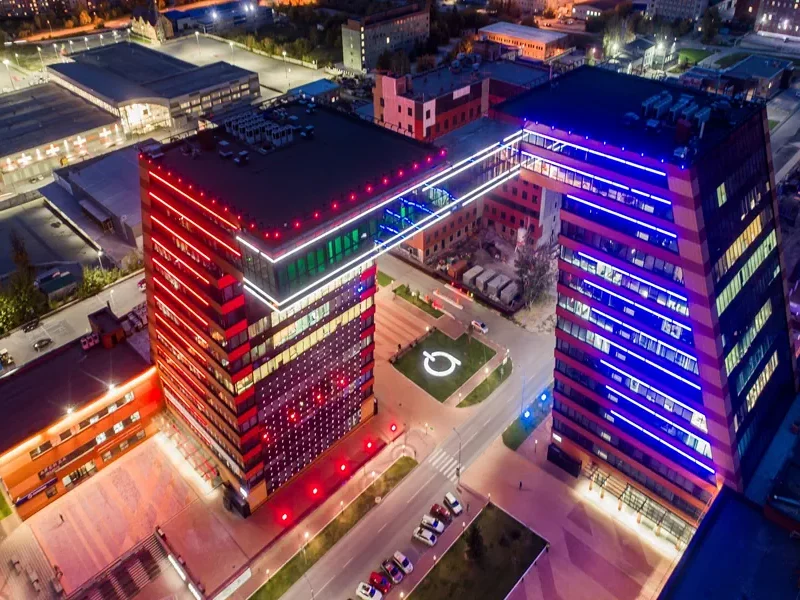Most of Russia’s natural resources are located in remote areas. The construction of the Northern Latitudinal Railway will give a powerful impetus to the development of Arctic oil and gas fields.
The development of transport infrastructure in the Arctic Circle area affects the country’s economy. Now the situation is starting to change for the better, which is good news. In the article we will tell you how the construction of the Northern Latitudinal Railway began and what the latest news is today.
Construction of the Northern Latitudinal Railway: a bit of history
The ideas of creating the Great Northern Railway were expressed even under Alexander II, when there was not even a Trans-Siberian railway project built. After the revolution, there was immediately renewed talk about laying rails along the coast of the polar seas.
However, for almost 30 years, the matter did not go beyond discussions — the Soviet leadership was not up to it. Collectivization, industrialization, and then the war — all this gave rise to more pressing problems. However, the project was not abandoned.
Transpolar highway — Stalin’s project

Its implementation began in 1947. On April 22, a resolution of the Council of Ministers of the USSR was issued on the establishment of a large seaport on Cape Kamenny in the Gulf of Ob. From the Chum station of the Pechora Railway, a 500 km long railway line was to be built.
One of the great Stalinist construction projects, known as the Transpolar Highway, or “Chum-Salekhard-Igarka”, began. The work was carried out at a rapid pace in the most difficult climatic conditions on the border of the Arctic Circle. Contrary to popular opinion, the “special contingent”, i.e. prisoners, accounted for only about a third of the 80,000 people involved in the project. The rest were freelancers — they always paid well for work in the conditions of the Far North.
At the beginning of 1949, the construction of the port at Cape Kamenny was abandoned due to shallow water and the impossibility of artificially deepening the Gulf of Ob. The terminus of the railway was moved to Igarka. Thus, the length of the planned route was almost one and a half thousand kilometers.
The construction was carried out until the death of I. V. Stalin. By the spring of 1953, the track was more than half finished. However, the leader of the people was not destined to see the end of his plan. After his death, the work was curtailed within three weeks.
Hundreds of tons of steel in the form of rails and machinery were left to rot in the tundra. The transpolar highway also took a considerable number of human lives — do not forget what climate these workers worked in.
Nevertheless, the sacrifices were, alas, in vain. The new leadership of the country considered the project unnecessary.
Reasons for the construction of a Transpolar highway
The Northern Railway was needed by the leadership of the Soviet Union. What for? The famous Yamal gas fields have not yet been discovered, and the products of the Norilsk Combine, both then and now, are perfectly exported by sea.
There are different opinions:
- The purpose of the construction was a direct connection of nickel deposits with factories in the European part of the country. Such a logistical step could, in principle, bring economic benefits. Although the quick payback of the project, given the huge costs, is extremely doubtful;
- Stalin feared a Third World War, which could be unleashed by the United States, which possessed nuclear weapons. The Urals and Siberia from the Arctic Circle were completely open. There would be nothing to stop the atomic bombing. Therefore, the road was needed for the subsequent creation of a powerful air defense line along it.
The latter motive, in principle, explains that the highway was built at a feverish pace, with extensive violations and defects, which was unusual. At that time, for such miscalculations, the construction managers could be instantly demoted to tie layers — and this would be the best outcome for them.
There were even quite ridiculous opinions expressed — that Stalin was building a road for organizing an all-Union pilgrimage to the places of his exile. Indeed, the village of Kureika, where the revolutionary Dzhugashvili spent part of his turbulent youth, is located near Igarka. Yet, such hypotheses are hardly worth serious consideration.
Why did the construction of the highway stop?
A possible reason for this decision could be the poor quality of the already constructed sections of the canvas. The fact is that the work was carried out at an emergency pace and practically without a project for reasons that were not fully understood. The climatic conditions of the area were not really taken into account, as a result of which the built plots fell into disrepair after a year.
Trains running on ready—made tracks traveled at a maximum speed of 15 km/h – the condition of the road no longer allowed. But even so, derailments of trains were commonplace.
The rapid development of missile weapons made the road not very necessary in military terms, and the increase in the tonnage of ships and the construction of icebreakers made it pointless to transport rail from Norilsk. Additionally, a lot of money was spent on the creation of the highway — about 2% of the entire construction budget of the country. Still the exact reasons for both the sudden end of the work and their hasty start are unknown.
Outcomes
Of course, the leaders of the USSR in 1953 could not predict the future for decades ahead. Yet, the closure of the Transpolar highway “turned around” very quickly.
In 1966, the world’s third largest Urengoy gas field was explored. During seismic exploration and primary development, the abandoned infrastructure of the highway was just useful to geologists. However, the lack of a full-fledged railway was noticed.
Most of the materials needed both for the development of natural resources and for the construction of the city of Novy Urengoy had to be transferred by helicopters. Despite the fact that the conditions for the operation of air transport in those places are far from sugar. It is not difficult to imagine what “words of gratitude” sounded to those who once blocked the construction of the highway. Not to mention the extra labor, loss of time and wear of expensive equipment.
Was there any benefit from the construction of a Transpolar highway?

The great construction did, however, bring benefits. The section of road from the Chum station to the city of Labytnangi (built first) is still in operation today and is part of the Northern Railway. After reaching Labytnanga, you can take a ferry to Salekhard –-the bridge has not yet been built.
During the time of V. I. Brezhnev, in the 1970s, two more sections of the road were restored – Korotchaevo-Nadym and Pangody-Novy Urengoy. Repairs were carried out according to light standards — the rails served mainly for the delivery of goods.
In the 1980s, the Ministry of Railways of the USSR tried to restore the section of the highway from Nadym to Korotchaevo. For some time, separate sections of the road were operated. But in 1989, the works were mothballed. Soon everyone was a little out of time for the railways, lost in the polar wilderness.
After the collapse of the USSR during the 1990s, railway communication continued in places on the section of the former highway from Nadym to Urengoy. Local repairs were carried out. However, a complete project did not appear until the 2000s.
New Times — a return to the Stalinist project

The first plans for the construction of a railway “in the footsteps” of the Transpolar Highway appeared in 2003, when the Nadym-Korotchaevo section completely collapsed. In 2005, in order to develop industrial and transport infrastructure in Yamal and the Urals, the UP-UP project (Ural Industrial-Ural Polar) was created. In 2006, a corporation with the same name was opened for its implementation.
In addition to the overhaul of the road section from Nadym to Korotchaevo, the construction of the following facilities was planned:
- station “Ob-2”;
- railway-automobile bridge over the Ob (Salekhard-Labytnangi) and its entrances;
- The Salekhard-Nadym branch line is 353 km long.
The draft of the last item was provisionally approved in 2010. Immediately there were voices of skeptics from among experts in construction and economics. Experts claimed that the documentation contains many errors and violations both in strategic planning and in the technological part.
Skeptics turned out to be right — in 2011, the Ministry of Finance of the Russian Federation recognized the project as costly, impractical and refused to finance it from the budget. The Czechs came to the rescue. OHL ZS has invested almost 2 billion euros in the construction of the railway. Czech banks agreed to lend another 1.5 billion.
How did the construction of the Northern Latitudinal Railway resume?
In 2011, the construction of a bridge across the Nadym River started. The work was carried out at the expense of the regional budget. In 2015, the automobile part of the bridge was commissioned, the cost of which amounted to 14 billion rubles. The construction of the railway segment has stalled, as the government of the Yamal-Nenets Autonomous District switched funding to higher priority facilities.
In addition to the bridge, the following steps were taken in the same year:
- The passport of the object “Northern Latitudinal Railway” has been fully approved. It also includes the reconstruction of the existing track from Labytnanga to Chum station and further along the Northern Railway to Konoshi;
- the cargo base of the future NLR has been determined — 23 million tons per year;
- A new railway station building has been opened in Novy Urengoy.
By 2017, it was planned to complete the laying of the second tracks on the Tobolsk-Surgut segment. In reality, the work was completed only in 2019. Now, in order to complete the reconstruction of the Tobolsk-Surgut-Korotchayevo stage, it is necessary to build 14 sidings on the sections from Purovsk to Limbey and from Pyre to Khasyrey.
These works, as well as the reconstruction of the Surgut station, will double the capacity of the road, and the volume of transported goods will reach 40 million tons per year upon completion of the construction of the Northern Latitudinal Passage.
What prospects does the construction of the Northern Latitudinal Railways open up?

The transport infrastructure of Russia leaves much to be desired, there are proverbs about Russian roads for a reason. One situation is when it is difficult for a cottager to get to his plot because of potholes. And the other one when the country’s economy suffers because of insufficiently developed communication routes, it is completely different.
Meanwhile, this is exactly what is happening. The development of the Far East is seriously hindered due to the congestion of the Trans-Siberian Railway and the BAM — the only ways by which serious cargo can be delivered there.
The construction of the Northern Latitudinal Railway, which will connect the Northern and Sverdlovsk railways, is precisely designed to relieve these highways. However, this is not the only problem that the construction of the Northern Latitudinal Railway solves.
Development of natural resources
A well-established transport infrastructure plays an extremely important role in the development of oil and gas deposits in the north. Its absence at the moment seriously hinders the development of Arctic deposits and the Russian economy as a whole.
The construction of the Northern Latitudinal Railway, taking into account its connection with the Sverdlovsk Railway, opens up great prospects both for optimizing the transportation of raw materials and finished products, and for the development of natural resource extraction.
As already mentioned, the development of the northern oil and gas fields began in the 60s. Currently, recoverable hydrocarbon reserves in the Arctic zone amount to 245 billion tons. Through many of these deposits, the NLR will pass:
- Yuzhno-Russian oil and gas field;
- Vankor and East Taimyr Cluster;
- Payakh group of deposits;
- West Virginia section.
The construction of the Northern Latitudinal Railway will greatly facilitate both the development and operation of existing deposits and the development of new ones.
In addition, an uninterrupted export of the extracted product will be established. The volume of hydrocarbon production is growing, and there is already insufficient capacity of the existing railway network, and it will grow. In addition, the processing industry is developing — the export of finished products is required.
The construction of the NLR will reduce the length of transport routes to the northern ports by 700 km. This will increase the turnover of rolling stock and reduce transport costs.
Construction of the Northern Latitudinal Railway and infrastructure development
Despite the fact that some sections of the former Transpolar highway were still completed and operated, almost 70 years have passed. This is a long time for the middle part of Russia, and in the harsh conditions of the Circumpolar region, structures have been destroyed much faster.
The existing segment of Chum-Labytnanga requires reconstruction — strengthening of the roadbed and artificial structures. In addition, some of the stations on the route have too short receiving and sending tracks, which do not allow trains of a fixed length – 71 cars.
The section from Nadym to Korotchaevo was never fully built. This segment requires not only the reconstruction and laying of a new railway track, but also the development of service infrastructure — railway stations and pier settlements, repair depots, etc. This will give a considerable impetus to the development of the northern territories and ensure the creation of new jobs.
Construction of the Northern Latitudinal Railway — financing and plans

Despite the fact that some movements towards the creation of the northern highway began in the early 2000s, the project gained some solidity only in 2018.
It was then that it became known that the construction of the Northern Latitudinal Railways would be carried out on the terms of a Public-Private Partnership (PPP), i.e. a concession. The implementation period was named — until the end of 2022.
The total amount of planned investments is 236.7 billion rubles, taking into account the reconstruction of existing sites. Of this amount, the creation of a new road accounted for more than 113 billion.
In August, Prime Minister Dmitry Medvedev signed a corresponding decree, and on October 2, 2018, an agreement was signed on the construction of the Northern Latitudinal Railway. The parties to the agreement are the Federal Agency for Railway Transport (Roszheldor) and LLC “NLR”, specially created for this purpose.
The beneficiaries of the limited liability company are 50.1% of “Spetstransstroy”, 49.9% belong to the subsidiary of JSC “RZHD” “KP-Invest”. The main owner of the company is also a part-time major contractor of the railway monopoly.
The construction of the Northern Latitudinal Railway is a unique deal in the Russian Federation
The Northern Latitudinal Railway is the third major railway concession in the history of the Russian Federation. Prior to that, agreements had already been signed with Tamanneftegaz and JSC Tuva Energy Industrial Corporation.
But the deal is the only one of its kind — the first two concessions from private business were financed by the same companies that planned to carry out transportation.
In the case of the United States, the interests of private investors are precisely in the performance of construction work. Future shippers are independent companies and do not participate in the project in any way.
Distribution of responsibilities
The total length of the planned highway will be 707 kilometers. Of course, no one can “pull” such a volume of work alone.
The construction was previously divided into the following stages:
- according to the agreement signed in 2017 between Russian Railways and Gazprom, the latter undertakes to ensure the construction and commissioning of the 112 km long Nadym-Pangoda stage;
- Russian Railways undertakes the reconstruction of the existing sections of the Chum-Labytnangi and Pangoda-Korotchaevo railway;
- The government of the Yamalo-Nenets Autonomous District promised to transfer to state ownership the plots necessary for the construction of the roadbed, as well as to ensure the construction of a road bridge across the Ob;
- Also, Russian Railways and Gazprom plan to create a joint venture to build the Nadym-Salekhard stretch with a length of 353 km and a railway bridge across the Ob, which will connect Salekhard and the Ob station in Labytnangi.
In August 2019, engineering and geodetic surveys were completed on the route of laying the future highway, in 2020 all auxiliary facilities were completed. However, the main work has not been started — discussions and approvals are underway. The optimal scheme of the project implementation has not yet been developed.
Construction of the Northern Latitudinal Railway — latest news

Delays with the construction of the Northern Latitudinal Passage (SSH) eventually attracted the attention of the head of state. On April 21, 2021, President Vladimir Putin mentioned this issue in a message to the Federal Assembly.
According to him, the project has been worked out for a long time and there are all possibilities for launching. An unambiguous hint to the responsible persons that it is time to move from words to deeds.
On August 14, 2021, the head of the Ministry of Economic Development, M. Reshetnikov, spoke about the advantages of the USX and allowed its financing from the Federal Reserve Fund.
Yet, already on the 17th, another postponement of the completion dates was announced – this time for 2027. The amount that will have to be spent on the construction of the highway has more than doubled — up to 500 billion rubles.
At the end of August 2021, the government of the Yamalo-Nenets Autonomous Okrug applied for an infrastructure loan of 50 billion rubles for the implementation of its part of the construction of the United States, in particular, the bridge over the Ob River. According to the governor of YANAO D. Artyukhov, after the allocation of this money, the project will finally get off the ground. This will happen, according to him, in 2022.
Construction of the Northern Latitudinal Railway and the economy of the Russian Federation
The construction of the Northern Latitudinal Passage is extremely important for the economy of the Russian Federation. In addition to the prospects of unloading the Transsib and BAM-a, the development of some large deposits is difficult without it:
- East Messoyakhsky;
- Yuzhno-Tambeysky;
- Yarudeisky.
The development of new oil and gas deposits is also problematic in the absence of railway communication.
The construction of the Northern Latitudinal Course will solve the problems of transport accessibility of large deposits, which will give an additional impetus to the development of the Russian economy.
Разрабатываем Стратегии для собственников бизнеса в целях оптимизации группы компаний, решения нестандартных задач и продажи активов. Оказываем услуги по сопровождению сделок M&A, управлению непрофильными активами и проектами в целом.













